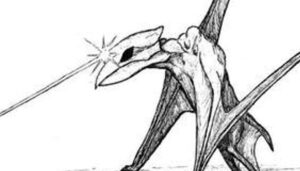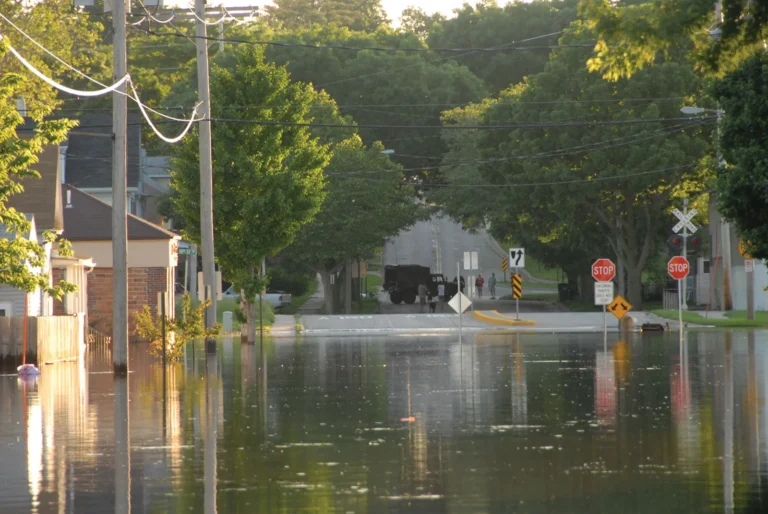.Iowa’s landscapes, which range from lush forests to expansive grasslands, are home to a wide variety of wildlife, each contributing to the state’s rich natural ecosystem.
While much of this wildlife is harmless and can be enjoyed by nature enthusiasts, some creatures pose a real threat to humans and animals.
Today, I want to highlight the most dangerous animals in Iowa, offering insights into their habitats, behaviors, and the dangers they present.
Table of Contents
Toggle10. Ticks

On the tenth place in our list of dangerous animals in Iowa are Ticks.
Ticks are commonly found in grassy, wooded areas throughout Iowa, especially in the warmer months.
While they are tiny and often go unnoticed, they can pose significant health risks as carriers of diseases like Lyme disease and Rocky Mountain spotted fever.
These diseases can be transmitted through the bite of an infected tick, making it essential to take precautionary measures when spending time outdoors.
- Size: Tiny, less than a centimeter long
- Region: Found throughout Iowa in grassy and wooded areas
- Species: Deer ticks, Lone star ticks, American dog ticks
To prevent tick bites, wearing insect repellent and checking your body for ticks after outdoor activities are recommended.
Paying attention to clothing and skin, particularly around areas where ticks may latch on, can help avoid these tiny but dangerous creatures.
9. Mosquitoes

Mosquitoes are a common annoyance among animals in Iowa, especially during the warm months when their populations surge.
These tiny insects may seem harmless, but they can carry dangerous diseases such as West Nile Virus, Zika, and even malaria in rare cases.
These diseases are transmitted when a mosquito bites an infected individual and then bites another person, spreading the virus.
- Size: Typically 3-6 millimeters
- Region: Statewide, especially near standing water
- Species: Culex, Aedes, Anopheles
Preventing mosquito bites involves using insect repellent, ensuring proper sanitation, and using mosquito nets or screens in areas where they are prevalent.
Draining any standing water around homes or campsites is also an effective method of reducing their population.
Of course, this is not the only insect you should be aware of in the state of Iowa.
8. White-Tailed Deer

While white-tailed deer are not inherently dangerous, they pose a significant risk to drivers in Iowa.
Collisions with deer are common, particularly during the mating season in the fall when deer are more active and less cautious.
Iowa ranks high in deer-related crashes, which can cause severe vehicle damage and injuries to passengers.
- Size: 68 to 97 kilograms (150 to 215 pounds)
- Region: Rural areas throughout Iowa
- Species: White-tailed deer (Odocoileus virginianus)
Drivers are advised to be especially vigilant in rural areas during dawn and dusk when deer are most active.
Slowing down and watching for deer crossing signs can help prevent accidents. If a collision is unavoidable, it’s safer to brake firmly and maintain control of the vehicle rather than swerve.
7. Coyotes

Coyotes are among the most dangerous animals in Iowa. Also, they are widespread across Iowa, and while they are rarely dangerous to humans, they can pose threats to pets and livestock.
These adaptable predators tend to avoid human contact but may become bolder if they are sick or threatened.
Rabid coyotes are particularly dangerous and should be avoided at all costs.
- Size: 9 to 23 kilograms (20 to 50 pounds)
- Region: Found statewide, in rural and urban areas
- Species: Coyote (Canis latrans)
If confronted by a coyote, making loud noises or waving arms can scare them away. To protect pets and livestock, keeping animals indoors at night or using secure fencing can help prevent encounters.
It’s important not to feed coyotes or leave food scraps outdoors, as this can attract them to human-inhabited areas.
6. Black Widow Spider
Black widow spiders are notorious for their venomous bite, which can cause severe pain and discomfort, though fatalities are extremely rare. These spiders are identified by their black bodies and the red hourglass marking on their abdomens.
They tend to inhabit dark, quiet places such as basements, sheds, and garages.
- Size: 3 to 10 millimeters (females are larger)
- Region: Found in dark areas around homes and outdoors
- Species: Black widow (Latrodectus mactans)
To avoid black widow bites, wearing gloves when cleaning out storage spaces or handling outdoor debris is advised. If bitten, immediate medical attention should be sought to manage symptoms, especially in vulnerable populations like children and the elderly.
5. Brown Recluse Spider

The brown recluse spider is another venomous spider found in Iowa, primarily in the southern regions of the state.
Known for its shy nature, this spider is typically not aggressive, but its bite can cause serious health issues.
A brown recluse bite can lead to necrosis, tissue damage, and infection, requiring prompt medical care.
- Size: 6 to 20 millimeters
- Region: Southern Iowa, indoors and in hidden places
- Species: Brown recluse (Loxosceles reclusa)
To avoid contact with brown recluse spiders, it’s important to wear protective clothing when handling items stored in undisturbed areas like closets, attics, and basements.
If bitten, washing the bite area and seeking immediate medical help is critical to prevent further complications.
4. Eastern Massasauga

The Eastern Massasauga rattlesnake is a rare and endangered species in Iowa, primarily residing in wetlands and grasslands.
While they are venomous, these snakes are secretive and typically avoid human contact.
However, their bite can cause serious damage to blood flow and tissue, making them one of the more dangerous species to encounter in Iowa.
- Size: 45 to 76 centimeters
- Region: Wetlands and grasslands in Iowa
- Species: Eastern Massasauga (Sistrurus catenatus)
Conservation efforts are in place to protect the Eastern Massasauga, and it’s important to respect their habitat. If encountered, it’s best to slowly back away and avoid disturbing the snake.
3. Copperhead Snake

The copperhead snake is another rare but venomous species found in southeastern Iowa. Known for its distinctive copper-colored skin, this snake is typically shy and will only bite if provoked.
Due to its endangered status, it is illegal to harm or collect copperheads in Iowa.
- Size: 50 to 90 centimeters
- Region: Southeastern Iowa
- Species: Copperhead (Agkistrodon contortrix)
Copperhead bites are painful and can cause significant damage, but they are rarely fatal. If bitten, it is important to seek medical attention immediately.
Avoiding their habitats and remaining cautious when hiking in areas where they may live can prevent dangerous encounters.
2. Prairie Rattlesnake

The prairie rattlesnake is a venomous species found primarily in western Iowa’s grasslands.
While they are venomous, prairie rattlesnakes prefer to avoid humans, and bites are rare.
The species has benefitted from habitat restoration efforts that have helped their population recover.
- Size: 90 to 150 centimeters
- Region: Western Iowa grasslands
- Species: Prairie rattlesnake (Crotalus viridis)
If encountered, give prairie rattlesnakes plenty of space and do not attempt to handle or provoke them.
Listening for their characteristic rattle can provide a warning that you are too close.
1. Timber Rattlesnake

The timber rattlesnake is the most dangerous snake species in Iowa due to its size and the potency of its venom.
Found in eastern and southern Iowa, these snakes will typically give a warning by rattling their tails before striking.
However, if provoked, their bite can be life-threatening.
- Size: 90 to 150 centimeters
- Region: Eastern and southern Iowa
- Species: Timber rattlesnake (Crotalus horridus)
Timber rattlesnakes are protected by law in Iowa, so it’s illegal to kill them. If encountered, it is safest to back away slowly.
Anyone bitten by a timber rattlesnake should seek immediate medical attention, as their venom can cause serious health risks.
You will certainly agree with our decision to say that timber rattlesnake tops the list of the most dangerous animals in Iowa.
The Bottom Line
While Iowa’s natural beauty is a great attraction for outdoor lovers, it’s important to stay mindful of the potential dangers that come with sharing the environment with wildlife.
The animals in Iowa, that are on this list, though dangerous, are generally not aggressive unless provoked or threatened.
Being informed about these creatures allows you to better enjoy Iowa’s wilderness with the confidence that you can stay safe and aware of your surroundings.















